Table of Contents
Ready to turn your backyard into the ultimate adventure zone? Choosing the right outdoor children's playground equipment is more than just picking a swing set; it's about creating a safe, engaging, and imaginative space where kids can thrive. But with so many options, from towering play forts to simple swing sets, where do you even begin? This guide is your roadmap to navigating the world of outdoor children's playground equipment. We'll explore everything from selecting the perfect equipment based on your space and budget to ensuring it's installed safely. We'll dive into the different types of equipment available, offering insights into their benefits and suitability for various age groups. Whether you're a seasoned DIYer or prefer professional installation, we'll cover the essential steps to get your playground up and running. Plus, we'll share tips on maintaining and upgrading your equipment to keep the fun going for years to come. So, let's jump in and transform your backyard into a haven of laughter, play, and unforgettable memories!
Choosing the Right Outdoor Children's Playground Equipment for Your Space
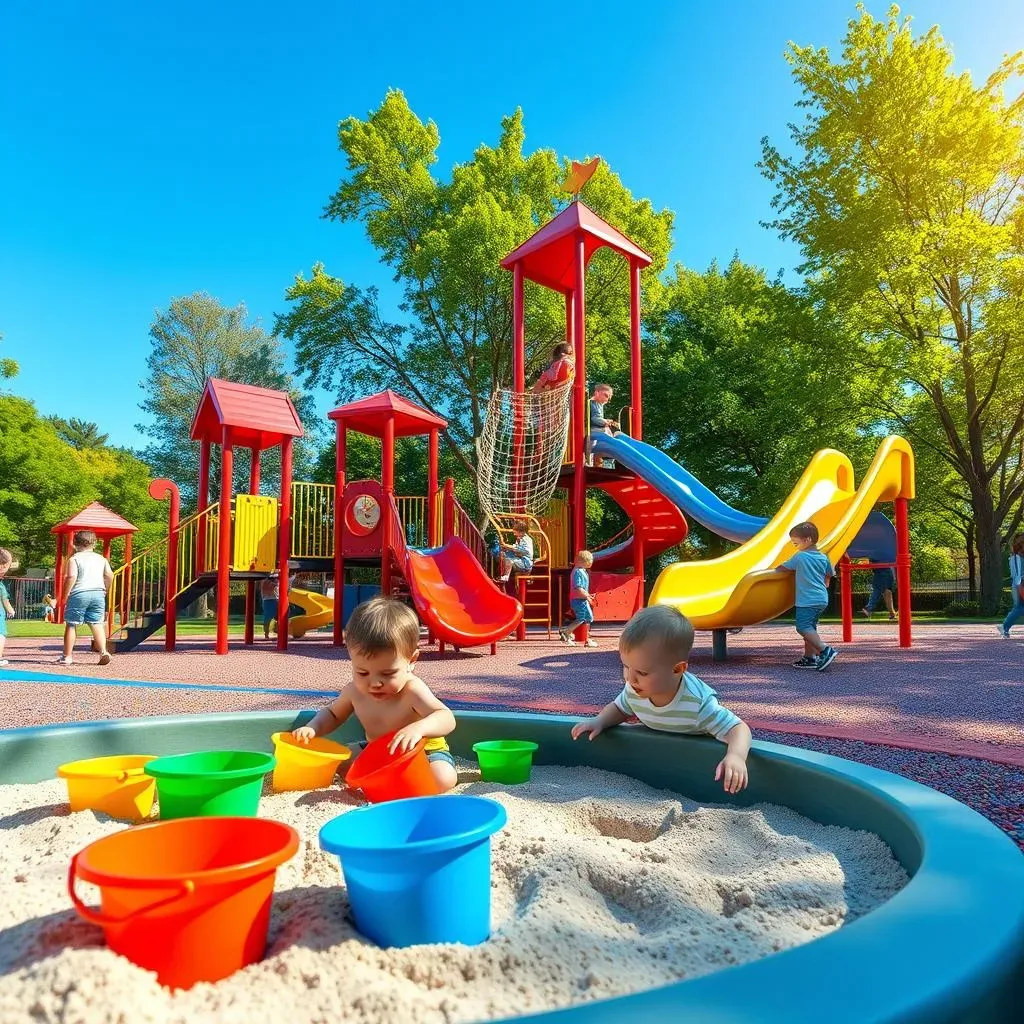
Choosing the Right Outdoor Children's Playground Equipment for Your Space
Assessing Your Available Space
so you're ready to build a playground, awesome! First thing's first: let's talk space. I mean, really talk space. Don't just eyeball it. Grab a measuring tape and get down to brass tacks. Think about the area you're working with. Is it a sprawling lawn or a cozy corner? This will dictate the size and type of equipment you can realistically accommodate. A massive swing set in a tiny yard? Probably not the best idea.
Consider the ground surface, too. Is it level? Is it grass, dirt, or concrete? You'll need to factor in safety surfacing like wood chips, rubber mulch, or poured-in-place rubber. These surfaces require additional space beyond the equipment's footprint. And don't forget about overhead clearance! Tree branches or power lines can quickly turn playtime into a hazard. Make sure you have ample vertical space for swings, slides, and climbing structures.
Matching Equipment to Age and Abilities
Alright, you know your space. Now, who's going to be using this playground? A toddler's needs are vastly different from a ten-year-old's. For the little ones, think low-to-the-ground structures, soft surfaces, and activities that promote sensory exploration. Bucket swings, small slides, and sandboxes are all great options. As kids get older, they crave more challenging and adventurous play. Think climbing walls, rope courses, and taller slides.
Also, it's important to consider any physical limitations or special needs. Adaptive playground equipment can ensure that everyone can join in the fun. Ramps, transfer platforms, and accessible swings are just a few examples of how you can create an inclusive play environment. Remember, the goal is to create a space that's both fun and safe for all children, regardless of their age or abilities.
Age Group | Recommended Equipment | Safety Considerations |
|---|---|---|
Toddlers (1-3 years) | Bucket swings, small slides, sandboxes | Soft surfaces, low heights, close supervision |
Preschoolers (3-5 years) | Swings, slides, climbing structures | Age-appropriate equipment, impact-absorbing surfaces |
School-age (5-12 years) | Climbing walls, rope courses, taller slides | Proper fall zones, regular maintenance |
Safety First: Essential Considerations for Outdoor Play Equipment
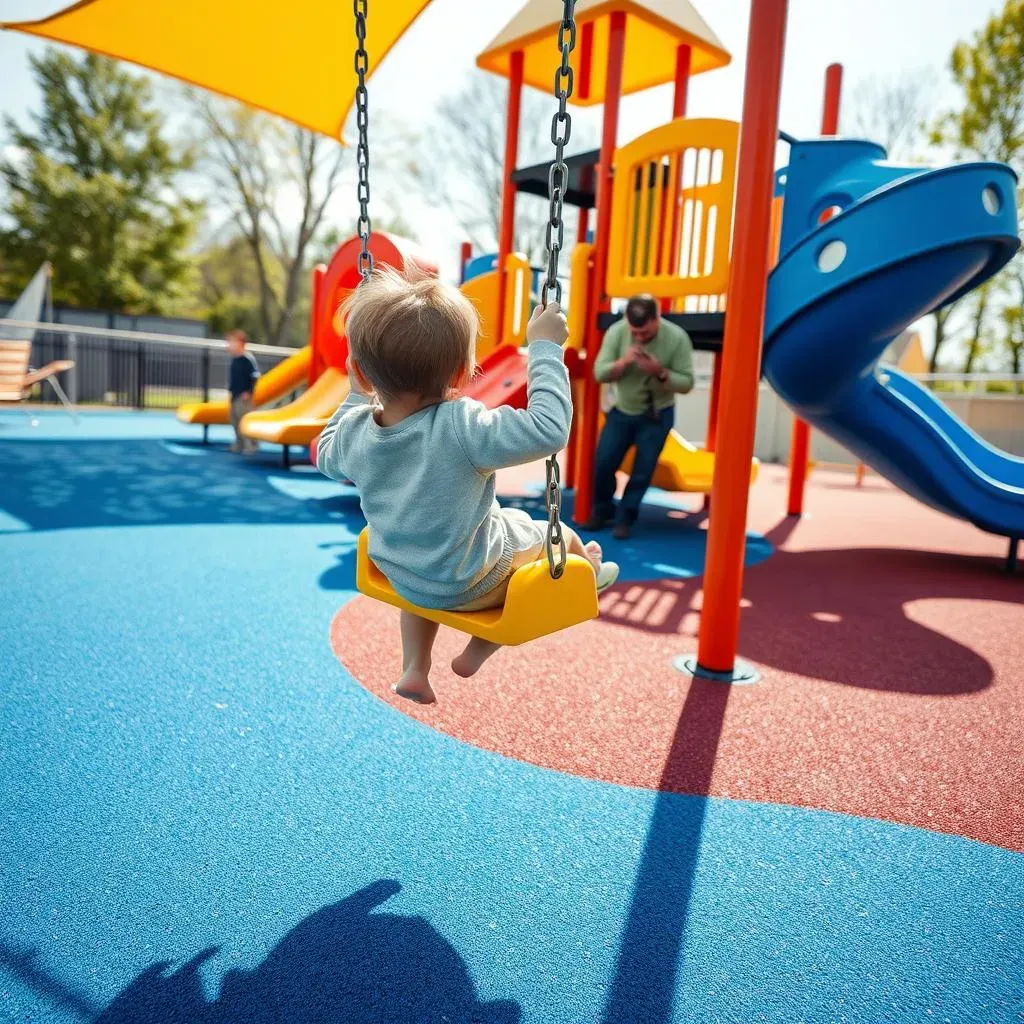
Safety First: Essential Considerations for Outdoor Play Equipment
Choosing the Right Surfacing
let's get serious for a sec. We're talking about kids here, and their safety is paramount. The most critical aspect of playground safety? The surfacing! Forget about grass or concrete – those are accidents waiting to happen. You need impact-absorbing materials that can cushion falls and prevent serious injuries. Think about it: a fall from even a few feet onto a hard surface can be devastating. That's why engineered wood fiber (EWF), rubber mulch, or poured-in-place rubber are your best bets. These materials are specifically designed to absorb impact and reduce the risk of injury.
But it's not just about the type of material; it's also about the depth. The higher the equipment, the deeper the surfacing needs to be. Check the manufacturer's guidelines for recommended depths based on the fall height of your equipment. And remember, proper installation is key. Make sure the surfacing is evenly distributed and compacted to provide consistent protection. Regular maintenance is also essential. Rake and level the surfacing periodically to prevent compaction and ensure it maintains its impact-absorbing properties.
Regular Inspections and Maintenance
Alright, your playground is set up with the right surfacing and the kids are loving it. But your job isn't done. Nope, not even close. Regular inspections and maintenance are crucial to keeping your playground safe and fun for years to come. Think of it like this: your car needs regular check-ups to keep it running smoothly, and your playground is no different. Start by visually inspecting the equipment regularly. Look for loose bolts, cracked or broken parts, and signs of wear and tear. Pay close attention to swing hangers, slide surfaces, and climbing structures. These are high-stress areas that are prone to failure.
Next, don't forget about the surfacing. Check for displacement, compaction, and debris. Rake and level the surfacing as needed to maintain its impact-absorbing properties. And don't forget about the surrounding area. Trim any overgrown vegetation that could obstruct visibility or create hazards. Remove any sharp objects or debris that could cause injuries. Regular maintenance is also essential. Tighten loose bolts, replace worn-out parts, and repair any damage promptly. A well-maintained playground is a safe playground, and it's an investment in the health and well-being of your children.
Inspection Item | Frequency | Action |
|---|---|---|
Loose bolts | Weekly | Tighten |
Cracked parts | Weekly | Replace |
Surface depth | Monthly | Rake and level |
Debris | Daily | Remove |
Beyond the Swing Set: Exploring Diverse Types of Outdoor Children's Playground Equipment
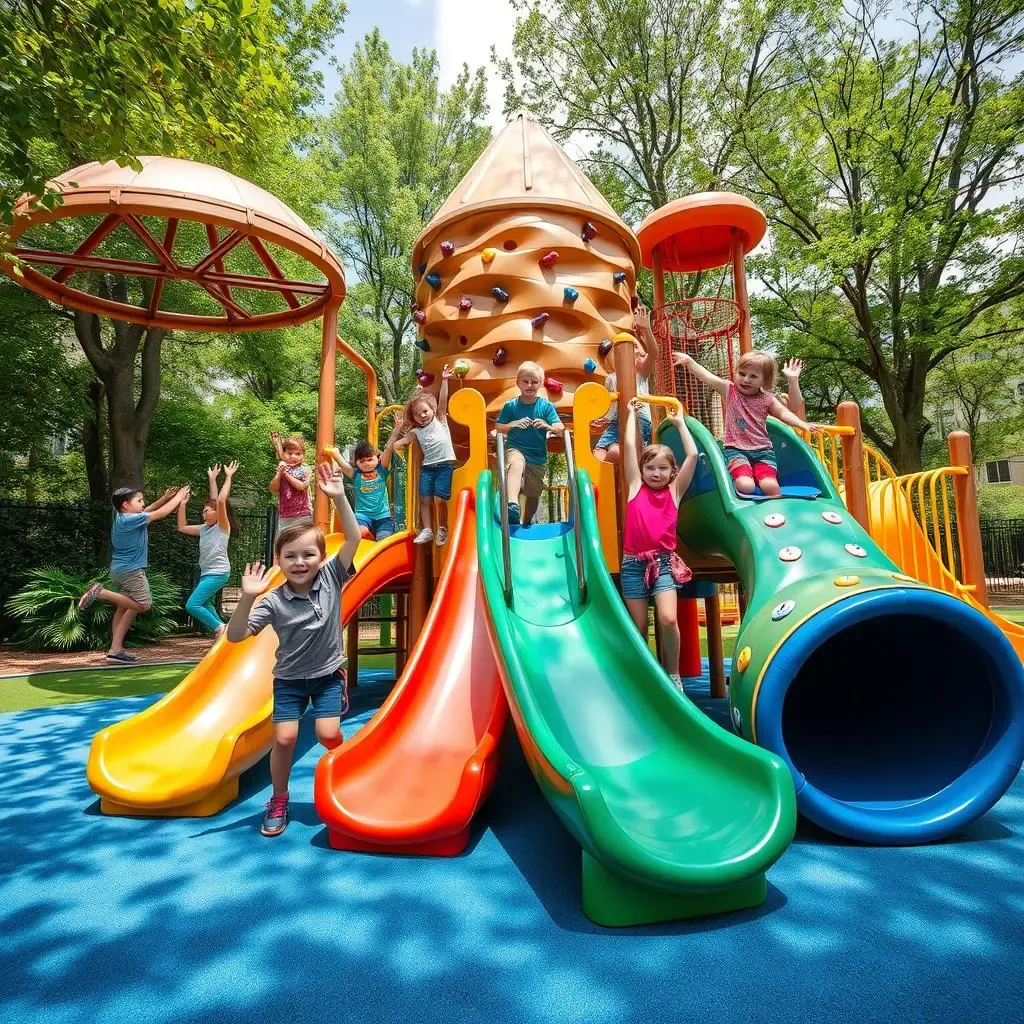
Beyond the Swing Set: Exploring Diverse Types of Outdoor Children's Playground Equipment
Climbing Structures: Scaling New Heights
Alright, let's ditch the idea that playgrounds are just about swings and slides. There's a whole universe of outdoor children's playground equipment out there, and climbing structures are a fantastic place to start. We're talking beyond the basic ladder – think geodesic domes, rock climbing walls, and rope nets that challenge kids both physically and mentally. These structures aren't just about getting to the top; they're about problem-solving, building strength, and developing coordination. Plus, they're a total blast! Imagine your kiddo conquering a climbing wall, feeling that sense of accomplishment as they reach the summit. It's not just play; it's a confidence booster.
When you're considering climbing structures, think about age appropriateness and skill level. Start with something manageable for younger children and gradually introduce more challenging options as they grow. Safety is, of course, paramount. Ensure that the structure is properly anchored and that the surrounding area has adequate safety surfacing. With the right climbing structure, you can transform your backyard into a dynamic and engaging play space that encourages kids to push their limits and discover their potential.
Slides: Twists, Turns, and Endless Fun
Slides are a playground classic for a reason. They're simple, exhilarating, and provide endless entertainment for kids of all ages. But slides have come a long way since the basic metal chute. Now, you can find slides in all shapes, sizes, and materials. Think about curved slides, tunnel slides, and even roller slides that add a whole new dimension of fun. Material-wise, plastic slides are durable and low-maintenance, while stainless steel slides offer a super-fast ride.
When choosing a slide, consider the age and abilities of your children. Toddlers will enjoy gentler slopes and shorter slides, while older kids might crave the thrill of a steeper, faster ride. Safety is always key. Make sure the slide has high side walls to prevent falls and a smooth, even surface. The landing area should be clear of obstacles and have adequate safety surfacing. With the right slide, you can add a dose of adrenaline and excitement to your outdoor children's playground equipment setup.
Slide Type | Description | Benefits |
|---|---|---|
Straight Slide | Classic slide with a straight path | Simple, affordable, suitable for all ages |
Curved Slide | Slide with a curved path | Adds excitement, requires less space |
Tunnel Slide | Enclosed slide with a tunnel | Provides a sense of adventure, protects from sun |
Roller Slide | Slide with rollers for a smooth ride | Unique sensation, low friction |
DIY vs. Professional Installation: Setting Up Your Outdoor Play Area
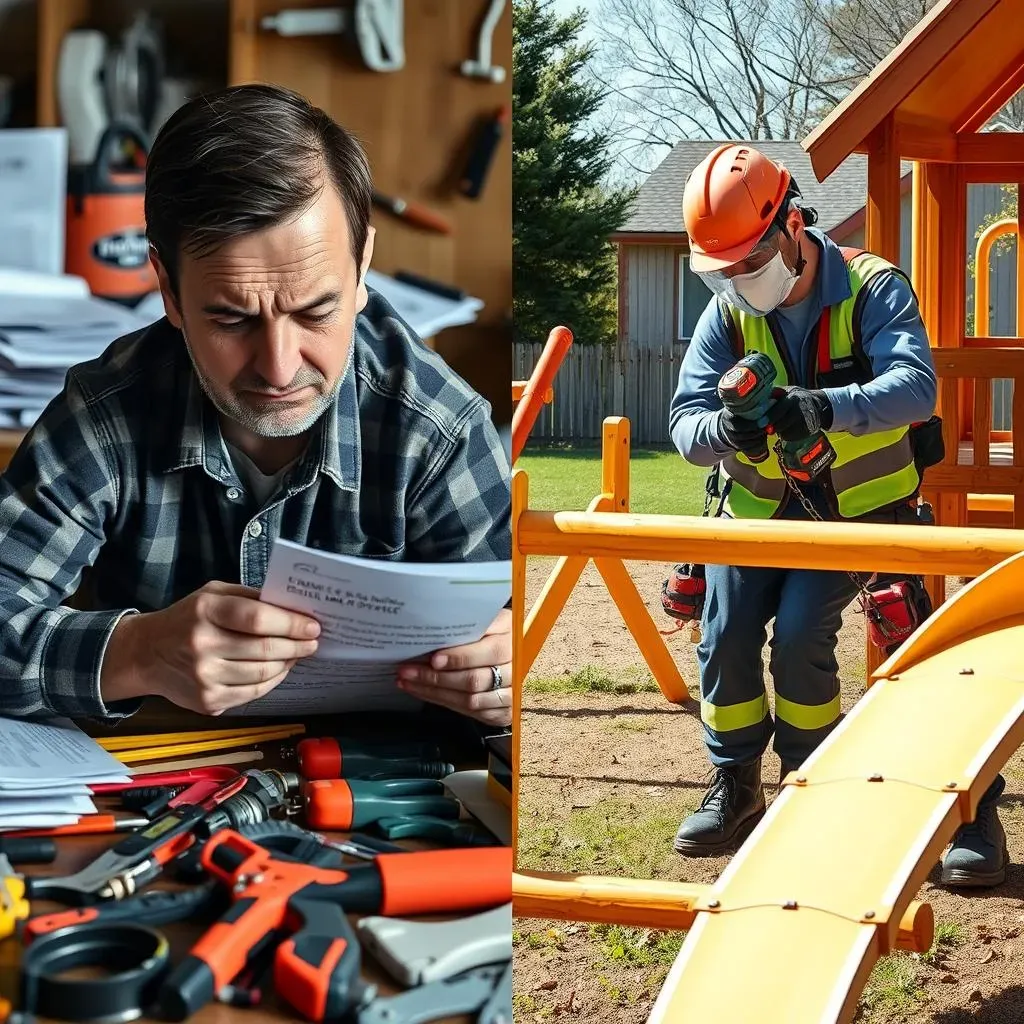
DIY vs. Professional Installation: Setting Up Your Outdoor Play Area
The Thrill of DIY: Tackling the Playground Project Yourself
So, you're thinking about building your outdoor children's playground equipment yourself? Awesome! There's a real sense of satisfaction that comes from creating something with your own two hands, especially when it's for your kids. But let's be real, it's not all sunshine and rainbows. DIY installation requires time, effort, and a certain level of handiness. You'll need to be comfortable with tools, following instructions, and potentially troubleshooting along the way. But if you're up for the challenge, the rewards can be well worth it. Not only will you save money on installation costs, but you'll also gain a deeper understanding of how your playground is constructed, which can be helpful for future maintenance and repairs.
Before you dive in headfirst, assess your skills and experience. Are you comfortable working with wood, metal, and concrete? Do you have the necessary tools and equipment? Can you accurately read and interpret blueprints or assembly instructions? If you're unsure about any of these areas, it might be wise to start with a smaller, simpler project or seek guidance from a more experienced friend or family member. Remember, safety is paramount, so don't hesitate to ask for help when you need it.
Calling in the Pros: When Professional Installation Makes Sense
let's face it, not everyone is cut out for DIY projects. And that's perfectly fine! Sometimes, the best decision is to call in the professionals. Professional installation offers several advantages, especially when it comes to complex or large-scale outdoor children's playground equipment. Experienced installers have the knowledge, skills, and equipment to ensure that your playground is assembled correctly, safely, and efficiently. They can handle everything from site preparation and leveling to anchoring and surfacing.
Hiring professionals can save you time, hassle, and potential headaches. They can also provide peace of mind, knowing that your playground meets all safety standards and regulations. However, professional installation comes at a cost. Be sure to get multiple quotes from reputable companies and compare their pricing, experience, and warranty policies. Ask for references and check online reviews to get a sense of their reputation. And don't be afraid to ask questions. A good installer will be happy to explain their process and answer any concerns you may have.
Consider professional installation if:
- You're short on time or lack the necessary skills
- The equipment is complex or requires specialized tools
- You want to ensure compliance with safety standards
- You're concerned about potential liability issues
Step-by-Step: A Quick Guide to DIY Installation
Alright, if you're going the DIY route, here's a simplified rundown to get you started. First, read the manufacturer's instructions. Seriously, read them cover to cover. Next, Inventory all the parts. Make sure you have everything you need before you start. Prepare the site. Clear the area, level the ground, and mark the locations of posts and anchors. Assemble the equipment according to the instructions. Take your time and double-check your work. Install safety surfacing. Choose the right material and ensure it's properly installed and maintained. Finally, inspect the completed playground. Look for any loose bolts, sharp edges, or other potential hazards.
Remember, safety is key. Don't rush the process, and don't be afraid to ask for help if you get stuck. With a little planning and effort, you can create a safe and fun playground for your kids to enjoy for years to come.
Step | Description | Tips |
|---|---|---|
Read Instructions | Thoroughly review the manufacturer's manual | Highlight important steps, note safety warnings |
Inventory Parts | Check all components against the parts list | Organize parts for easy access |
Prepare Site | Clear debris, level ground, mark post locations | Ensure proper drainage |
Assemble Equipment | Follow instructions carefully, double-check connections | Use appropriate tools, ask for help when needed |
Install Surfacing | Choose impact-absorbing material, ensure proper depth | Compact surfacing for consistent protection |
Inspect Playground | Check for loose bolts, sharp edges, hazards | Address any issues immediately |
Maintaining and Upgrading Your Outdoor Children's Playground Equipment
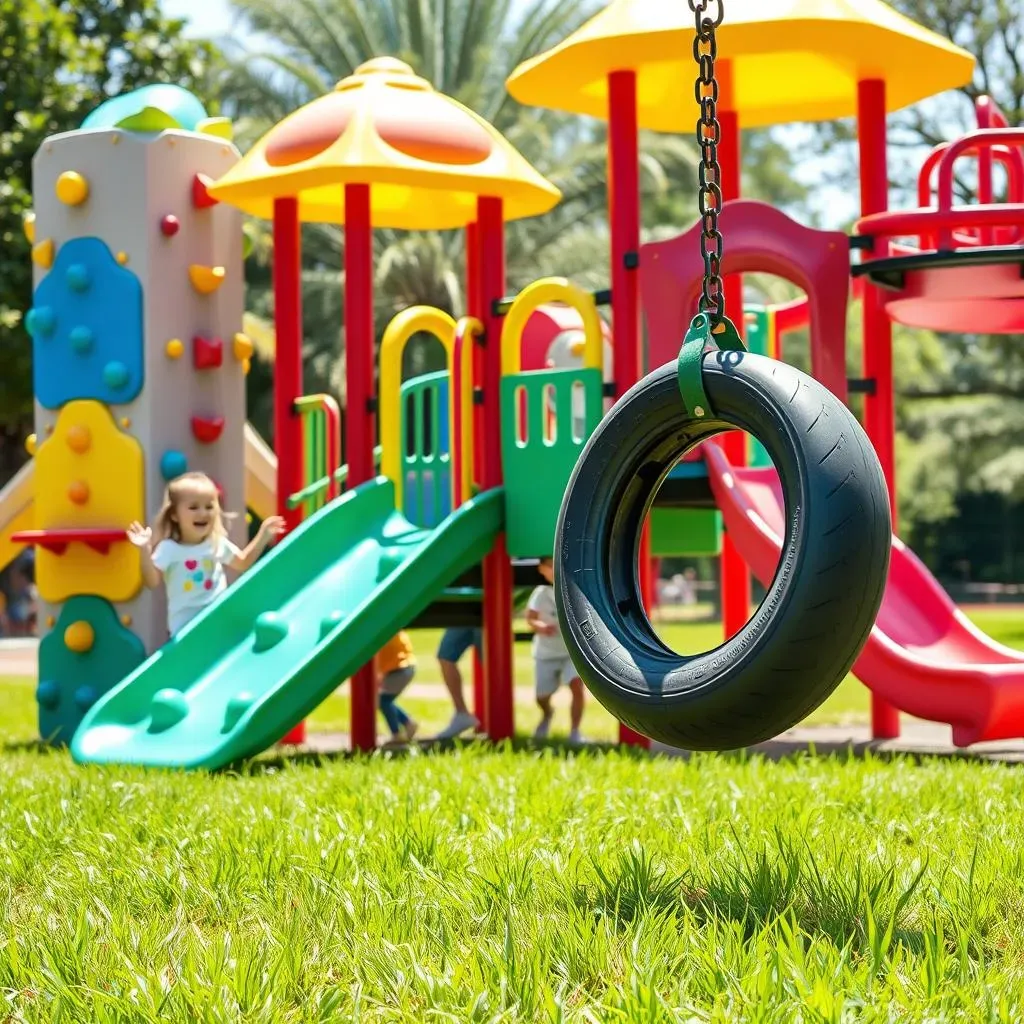
Maintaining and Upgrading Your Outdoor Children's Playground Equipment
Extending the Lifespan: Routine Maintenance Tips
So, you've got your outdoor children's playground equipment set up, the kids are loving it, and everything's perfect, right? Well, almost. Like any investment, your playground needs a little TLC to keep it safe and fun for years to come. Think of it as giving your equipment a regular health check-up. We're talking about routine maintenance – the kind of stuff that might seem small but can make a huge difference in the long run. Start with regular visual inspections. Look for loose bolts, cracked or splintered wood, and signs of rust or corrosion. Tighten any loose hardware and replace any damaged parts immediately. A little preventative maintenance can save you from bigger problems down the road.
Don't forget about the surfacing! Rake and level the material regularly to maintain its impact-absorbing properties. Remove any debris, such as leaves, twigs, or rocks, that could create hazards. And keep an eye out for weeds or grass growing through the surfacing. These can not only detract from the appearance of your playground but also create tripping hazards. With a little regular care, you can keep your playground looking great and functioning safely for years to come.
Enhancing the Fun: Smart Upgrades and Additions
Alright, your playground is in tip-top shape, but why stop there? Upgrading your outdoor children's playground equipment can add new levels of excitement and engagement for your kids. Think about adding new features, such as a climbing wall, a rope bridge, or a sandbox. These additions can provide new challenges and opportunities for imaginative play. You can also upgrade existing equipment. For example, you could replace a basic swing with a tire swing or a disc swing. Or you could add a slide to an existing play structure.
When considering upgrades, think about your children's interests and abilities. What kind of activities do they enjoy? What are their strengths and weaknesses? Choose upgrades that will challenge them and help them develop new skills. Also, consider the space you have available and the overall layout of your playground. You don't want to overcrowd the area or create safety hazards. With a little creativity and planning, you can transform your playground into a dynamic and engaging play space that your kids will love for years to come.
Upgrade Idea | Description | Benefits |
|---|---|---|
Climbing Wall | Vertical climbing structure with handholds | Builds strength, coordination, problem-solving skills |
Rope Bridge | Suspended bridge made of ropes | Develops balance, coordination, sense of adventure |
Sandbox | Enclosed area filled with sand | Encourages sensory play, creativity, social interaction |
Tire Swing | Swing made from a recycled tire | Durable, affordable, provides a unique swinging experience |
Weathering the Storm: Protecting Your Investment from the Elements
Your outdoor children's playground equipment is constantly exposed to the elements, from scorching sun to torrential rain. Over time, this exposure can take a toll on the equipment, leading to fading, cracking, and corrosion. That's why it's essential to take steps to protect your investment from the weather. Start by choosing materials that are weather-resistant, such as treated wood, powder-coated metal, and UV-resistant plastic. These materials are designed to withstand the harsh effects of the sun, rain, and snow.
Consider applying a sealant or stain to wooden equipment to protect it from moisture and UV damage. Cover the equipment during the off-season to prevent snow and ice buildup. And don't forget about the surfacing. Make sure it drains properly to prevent water from pooling and creating a breeding ground for mold and mildew. With a little preventative care, you can keep your playground looking great and functioning safely, no matter what the weather throws its way.
Creating Lasting Memories with Outdoor Children's Playground Equipment
Investing in outdoor children's playground equipment is more than just buying a product; it's investing in your children's health, happiness, and development. By carefully considering your space, safety requirements, and the types of play experiences you want to create, you can design an outdoor play area that will bring joy and laughter to your family for years to come. Remember to prioritize safety, maintenance, and ongoing upgrades to ensure your playground remains a fun and engaging space as your children grow. So, get out there, start planning, and watch your backyard transform into a world of adventure!